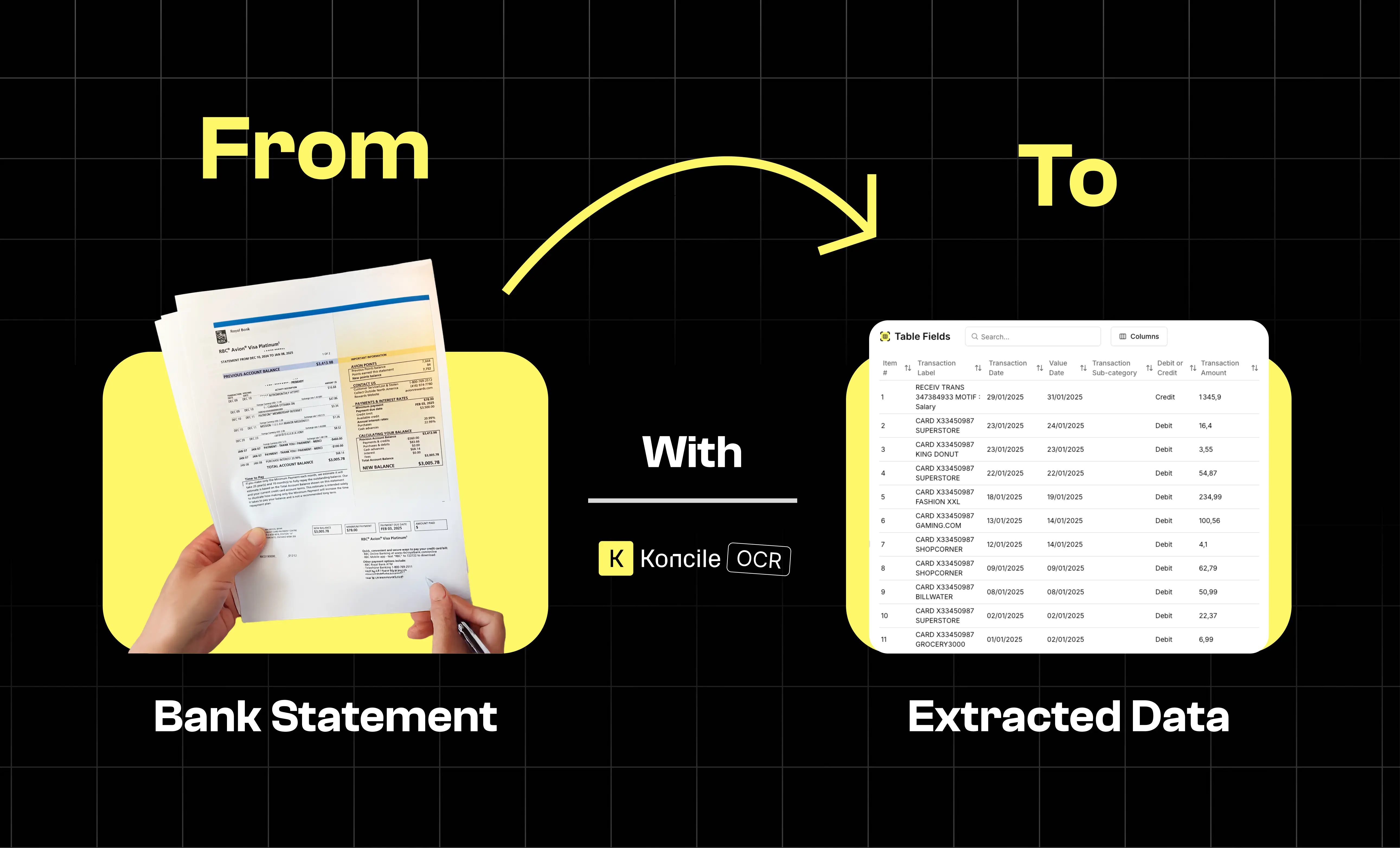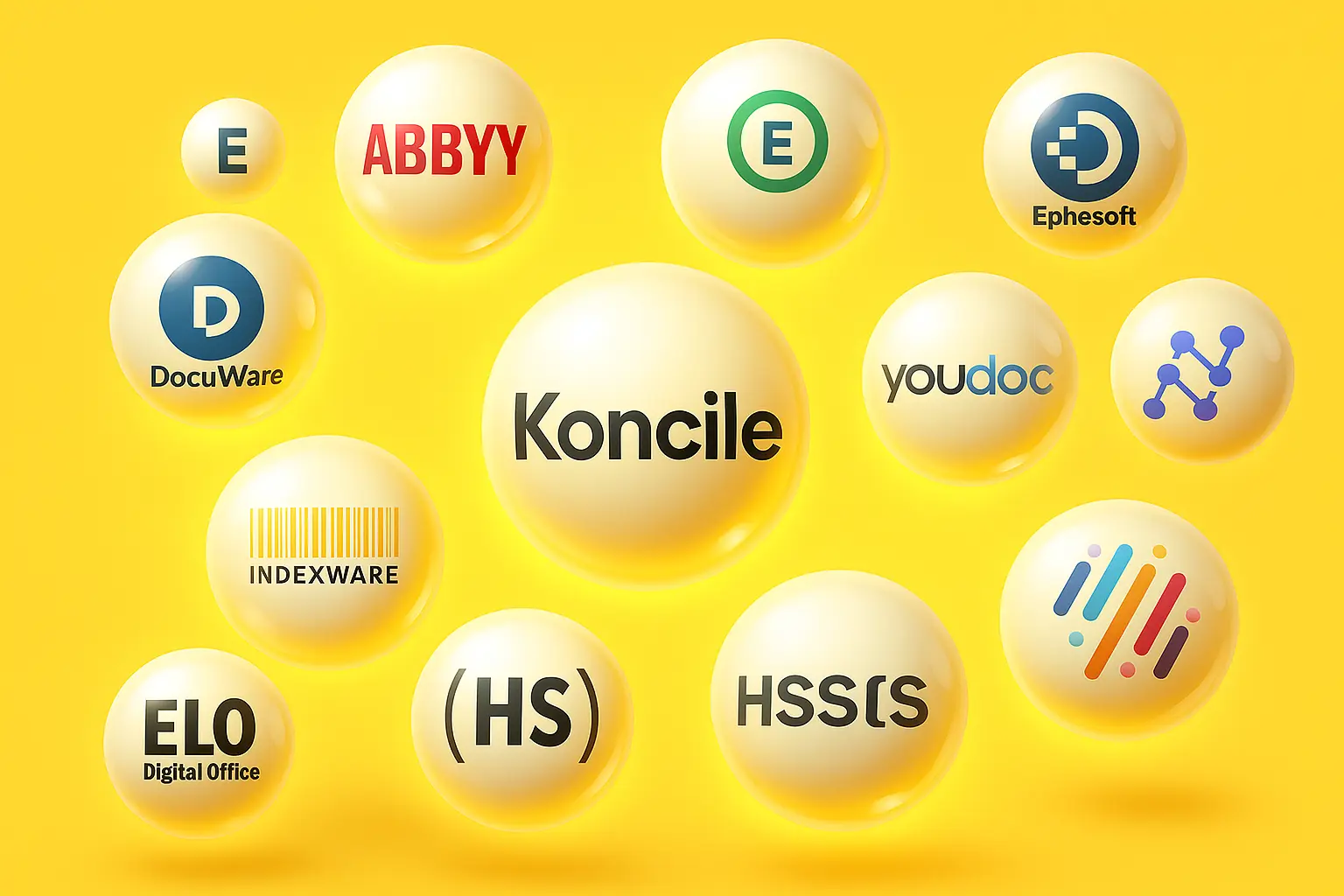
Learn how to extract accurate, structured data from bank statements using OCR and AI.
Case Studies
Dernière mise à jour :
July 7, 2025
5 minutes
Discover the 10 best open source OCR software in 2025. These tools offer a flexible and accessible solution for converting printed text into digital data. Whether it's for simple tasks or more complex needs, explore options like Tesseract, EasyOCR, or Kraken to find the one that fits your needs.
Explore 2025’s top 10 open-source OCR tools like Tesseract or EasyOCR to convert printed text into digital data for all use cases.
OCR technology (Optical Character Recognition) plays a crucial role in transforming printed or handwritten texts into digital data, supporting sectors such as finance, healthare, and logistics.
More and more users are opting for open source OCR models, attracted by their cost-effectiveness and flexibility. Backed by an active community, these tools benefit from regular updates and improvements.
However, while they offer many advantages, they can have compatibility issues, variable quality, require advanced technical setup, and sometimes offer fewer features than commercial OCR solutions.
Keep reading to discover our list of the top 10 open-source OCR tools to consider in 2025.

Tesseract is a powerful open-source OCR, maintained by Google, compatible with Linux, Windows, and OS X. It supports numerous languages, with the ability to add additional extensions. While it is flexible, its use can be complex for beginners, requiring coding knowledge and setup. Once mastered, it provides accurate results and is highly versatile.

EasyOCR is appreciated for its ease of integration and good performance, especially with medium-quality images. It supports over 80 languages and integrates easily into Python projects. Although it is less efficient than Tesseract for complex cases, its execution speed and ease of use make it an ideal choice for simpler needs.

Mistral is a powerful and fast OCR, known for its ability to handle a wide range of image formats. It is particularly valued for its high recognition accuracy, whether for simple documents or complex layouts.

OCRopus is a modular solution that offers customization and flexibility to meet the specific needs of each project. It is particularly notable for its ability to process historical and handwritten documents, thanks to its adaptable structure. This makes it especially well-suited for advanced users with specialized requirements in text processing.

Doctr is a modern OCR tool focused on recognizing structured documents, such as forms or scanned files. Built on deep learning models, it performs well with documents featuring diverse layouts. It excels in recognizing well-structured text and offers a good level of flexibility, though it may have limitations when dealing with more complex documents.

Kraken is a sophisticated OCR engine that excels in recognizing old or historical documents. It is particularly well-suited for text recognition in complex formats, with remarkable accuracy in this area. While it may not be as widely known as other options, Kraken is an excellent choice for projects requiring precise and detailed processing of hard-to-read documents.

Surya OCR stands out for its ability to handle complex documents, particularly those containing tables or mathematical elements. While its accuracy is high, its processing speed can be a drawback when dealing with large volumes of data.

CuneiForm is an open-source OCR that, while not as powerful as other major solutions, remains useful for basic OCR tasks. This OCR engine is particularly suited for users seeking a straightforward solution without the need for advanced features. It supports multiple image formats and is easy to deploy.

OCRmyPDF is an ideal tool for automating OCR on PDF files, especially when you have a large volume of scanned documents to process. While it is limited to PDF use, it is highly effective for mass scanning tasks.

OCR Space is a fast and efficient online OCR tool, perfect for users who don’t want to install software. However, due to its online nature, it may raise data privacy concerns, and its performance is generally lower compared to local solutions.
We have reached the end of our ranking of the top 10 open-source OCR solutions for 2025.
Each of these options addresses specific needs and offers unique advantages depending on the user's profile. Tesseract, with its great flexibility, is perfect for advanced users, while EasyOCR shines with its simplicity and efficiency for quick tasks.
For historical or handwritten documents, Kraken and OCRopus are essential choices. If your work focuses on PDFs, OCRmyPDF is the specialized tool you need.
Some of these tools can also be part of a broader intelligent document processing strategy, allowing companies to go beyond basic text recognition and automate entire workflows with contextual analysis and document understanding.
For teams handling structured files like invoices, forms, or contracts, it's worth considering how well your chosen OCR integrates into a larger ocr document classification pipeline for automated sorting and field-level extraction.
In 2025, these open-source solutions continue to improve and present compelling alternatives to commercial software while remaining accessible to everyone.
Move to document automation
With Koncile, automate your extractions, reduce errors and optimize your productivity in a few clicks thanks to AI OCR.
Resources

Learn how to extract accurate, structured data from bank statements using OCR and AI.
Case Studies

Discover the 10 best ready-to-use AI agents in 2025. Deploy them in less than a week, boost workflows, and automate processes without coding.
Comparatives

Discover the top 10 Document Capture & Data Extraction tools in 2025: use cases, pricing, and API integrations to streamline workflows.
Comparatives